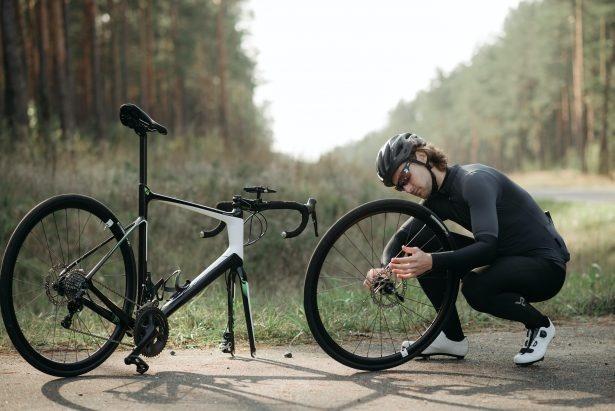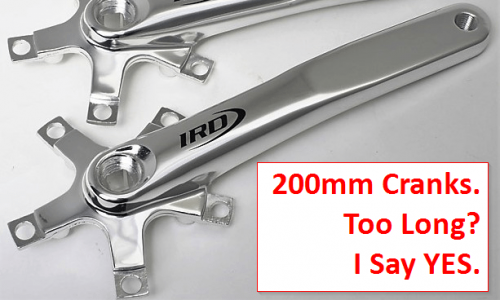There is nothing more frustrating than getting a flat mid-ride, many miles away from home. Doing the “walk of shame” to a local bike shop, or fixing the flat on the go can be equally as frustrating, and oftentimes it’s easily messed up.
The worst part is that in most cases, it could have been prevented by taking certain precautions. Let’s take a few backward pedals to see where exactly you went wrong.
Read the Tube First

Take a look at your inner tube. It holds the key to figuring out the reason why you got a puncture in the first place. Generally, there are two main types of punctures. The first type is a puncture from being pierced by a sharp object, which appears as a slash or single hole by itself.
The second, more common type of puncture is a “pinch-flat” or “snake-bite” puncture, which appears as two small holes beside each other caused by the tube being pinched between the ground and rim.
For Pinch Flats:
Increase Tire Pressures
One of the most common reasons for a pinch-flat is because of low tire pressure. Although they can be more comfortable at low pressures, and it’s easier to just not check if your tires are low, you need to be making sure you have adequate air pressure inside your tires for your weight and tire width.
Overinflating can in some cases do just as much harm as underinflating, so make sure to do some testing and research about what pressure will work best for you.
Get Wider Tires
If adding more air to your tires is not an option either because you feel you’re at the max of what should be added, or you just overall prefer a smoother ride, then getting wider tires is a very effective option. Road bikes are trending towards getting wider tires.
This is because people are starting to realize that narrower doesn’t necessarily mean faster rolling, and they feel that the tradeoff of a marginal speed gain is worth the extra comfort.
Wider tires allow you to run lower pressures because of having more room for compliance in the tire without pinching the tube. The result is more grip, fewer punctures, and overall more comfort on the bike.
Go Tubeless or Tubular
With road bike tires and rims getting wider, this means an easier overall tubeless setup. Tubeless tires can be used to reduce pressures, without the risk of pinch flatting a tube, because there is none. Tubeless tires often give weight benefits depending on the setup and give you extra confidence in your descending skills because of added traction.
If you do manage to get a pinch flat even after going tubeless, then they’re usually self-healing depending on the size of the puncture and will allow you to finish the ride.
If you don’t like the idea of tubeless, then you could go with tubular tires. They reduce weight even further and make it nearly impossible to pinch flat at proper pressures.
The drawback is that if you do get any type of puncture, then it becomes difficult to repair, and you might be off the bike for a bit.
Avoid Bumps and Potholes on the Road
My last tip for avoiding pinch-flats is to avoid bumps. It may seem simple, but remember to look far ahead on the road when riding.
This way, you’ll be able to see any oncoming bumps or potholes, and you’ll be able to avoid them easily. This is an incredibly useful skill to learn for all disciplines of cycling.
For Pierced or Slashed Punctures:
Protective Sidewalls
My first piece of advice to prevent slashes or punctures in your tires is to make a careful decision on the kind of tires you’re buying. Some brands have notoriously weak sidewalls, so if you’re worried about that, then purchase tires that have some form of protection in the side walls.
Continental Gatorskins have very thick sidewalls with strong materials in place to reinforce them.
Be careful though, as too much material can add a lot of weight to your bike, and can make the tubeless setup more challenging than it needs to be.
Don’t Use Slicks
Slicks are great for when you want speed. They’re lightweight, and roll very fast. Unfortunately, when it comes to any sort of debris on the road, they don’t handle very well and have a higher risk of a puncture than a tire with cutouts or small channels would.
Small channels allow for sharp debris on the road to be cleared out of the tire without puncturing and provide superior grip on rough or wet conditions.
Inspect the Rim and Tire for Debris
If you’ve got a case of chronic flats, always check your rim and tire for any possible shards of glass they may be sticking out. Check from the inside out, because you can’t always see them from the outside.
Make sure to check very thoroughly by lightly running your fingertips across the inside of the tire. I’ve never seen or heard of anyone getting cut by doing this, but just make sure to do it lightly, because they can be hard to spot by eye.
Overall
At the end of the day, flats are inevitable at some point in your life. You can take precautions to greatly minimize the risk of them, but it’s never guaranteed that you won’t get one. When a flat happens to you, just make sure that you’re not stuck on the side of the road without a tube or phone.

Cycling has been a passion of mine ever since I was little, and has grown into my job in a bike shop. My time on the bike is divided equally between mountain and road, but regardless of what I’m on, I enjoy poaching KOMs. Maybe a little bit too much sometimes.


